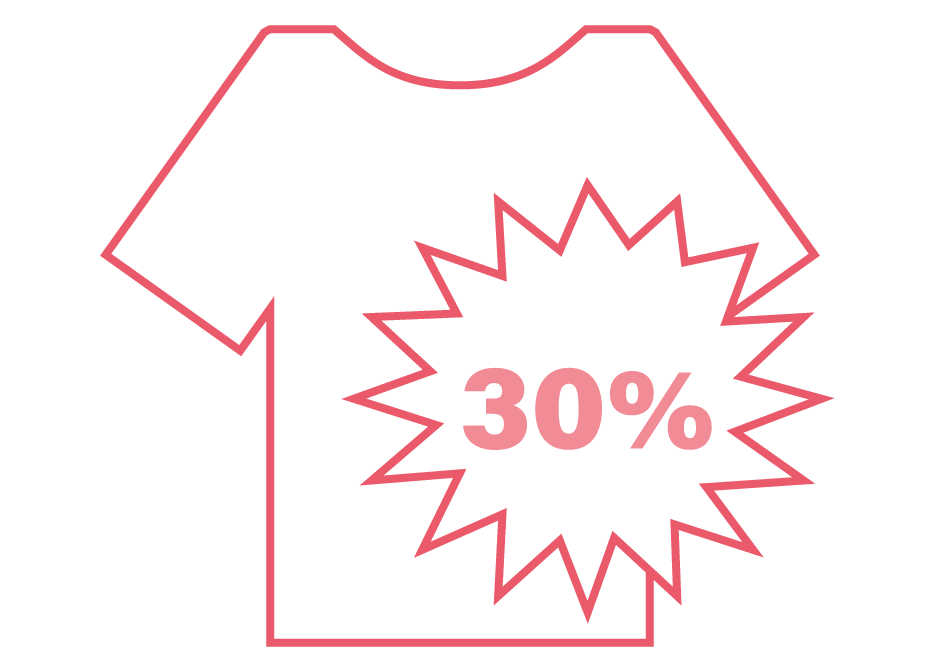

An introduction to nudging.
A ‘nudge’ is essentially a means of encouraging or guiding behaviour but without telling or forcing people, and ideally without the need for big incentives, sanctions or changes in legislation. Nudge-type interventions are often described as approaches that steer people in certain directions while maintaining their freedom of choice, like reminder notifications for booked appointments, sweet treats and snacks near the checkout of the supermarket and an interesting/appealing flight of stairs next to an escalator.
What is reactance?
Reactance refers to a motivational state experienced when a person feels their freedom of choice is being threatened. According to reactance theory (Brehm, 19661), if people feel they are being told or forced to engage in a behaviour they will resist or oppose that behaviour and favour the behaviour being restricted. For example, we can all recall a time that we've headed out and a parent told us to take an extra layer of clothing in case we got cold - stubbornly insisting we'll be warm enough - only to end up shivering uncontrollably and reluctantly having to head back to the house for that extra layer!

The consequences of reactance.
Reactance results from a feeling that personal freedoms are being threatened; this can provoke very negative emotions, leaving people feeling frustrated, offended or even disrespected. Businesses can experience the detrimental knock-on effects from this response, as a dissatisfied customer might advise others not to use your service or buy your product. Worse still, they might choose to do so by writing negative online reviews!
The negative opinions and experiences of others can have a very powerful influence on human behaviour. One reason for this is that we hold an inherent negativity bias whereby adverse events have a more significant impact on our psychological state than positive events (i.e. they weigh heavier on our minds). Another contributing factor is social proof which describes how we strive to reproduce the actions of others to reflect what we see to be the 'correct' behaviour. If everyone else is telling us not to book a certain hotel or purchase a particular brand of household item, we rarely feel compelled to go against the grain and find out for ourselves, especially as we are naturally loss averse and wouldn't want to waste our precious money or time on a suboptimal experience.
How to avoid provoking reactance
Understanding reactance is an important first step to preventing its negative consequences, but there are a number of further practical steps you can take to reduce the likelihood of prompting reactance in a client, customer or service user:
- Steer clear of overly-assertive language: try to avoid telling people what to do and instead present them with different options, maintaining their sense of freedom to choose how they behave.
- Scarcity tactics: we tend to perceive products or resources as more valuable if they are less readily available to us. As such, scarcity appeals are commonly used within marketing to increase purchases, however, research suggests that excessive use of 'faux-scarcity' can make consumers feel uncomfortable and pressured or rushed into making a purchase.
- Narrative: rather than communicating your message with assertive language, tell a story. In many cases, stories are more memorable, compelling and emotive, therefore have a stronger influence on our behaviour.
- Emotional Intelligence: it's extremely important that you consider the potential emotions your message could evoke for those receiving it and how they might react as a result.
- Reframing: humans are naturally loss-averse, meaning that we feel the impact of losing something far greater than we do that of gaining something. Reframe losses of freedom as gains, by presenting people with what the positive impact of the change will be, rather than focusing in on what stands to be lost.
- Relatability: we know from MINDSPACE that our attention is drawn to things that are novel, extreme, surprising or relatable to us in some way (salience). The more relatable and non-confrontational you are as a messenger, the less likely a customer is to feel reactance in response to your message.

The boomerang effect: how you can take advantage of reactance theory.
As reactance causes people to favour the opposite of the intended action, clever marketers can use this to their advantage. A famous example of this comes from Patagonia, who told their customers NOT to buy a particular jacket, as they were demonstrating its impact on the environment, and encouraging customers to reduce, repair, reuse and recycle their clothing. By telling people NOT to buy the jacket, however, they only increased the desirability of the jacket and sales of the item went up by 30%.
Other ways in which marketers use their knowledge of reactance to drive sales and consumer interest is by making products appear 'limited edition' and exclusive (as described previously in relation to 'scarcity tactics'), however, this tactic can backfire. Let's take cancelling a phone contract, changing energy provider or even just unsubscribing from a mailing list, for example. These processes are often extremely lengthy, as companies want to retain your custom, but providing you with new offers or reasons to stay often provokes reactance as they have taken away the option you really wanted.
At Social Change, we are advocates of marketing for social good. We want to provide services that help people to make healthier and more sustainable life choices. When developing new campaigns or introducing our services, we steer clear of making things mandatory or forcing people to do something. Instead, we provide them with choice without threatening their freedom.




